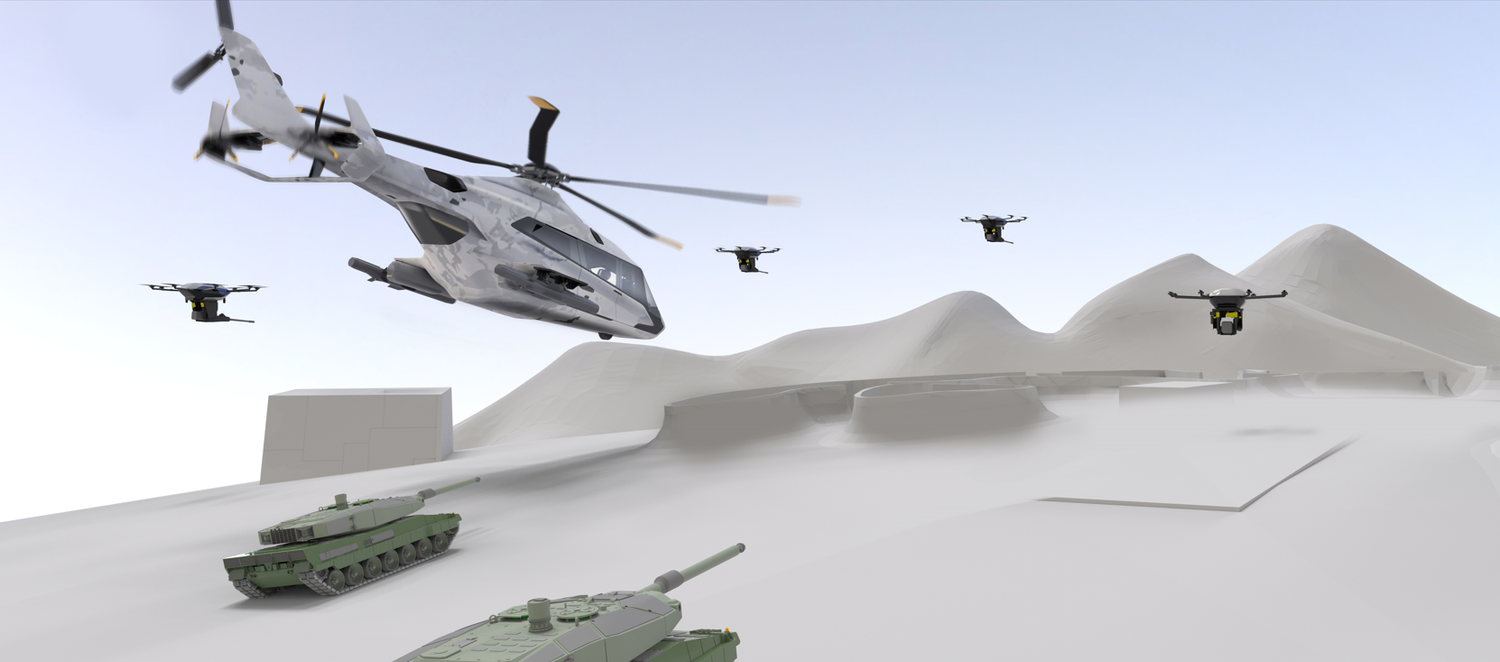NSPA commissions Airbus, Lockheed Martin and Leonardo to develop NATO’s helicopter of the future
The NATO Support and Procurement Agency (NSPA) awarded three contracts to Airbus Helicopters, Lockheed Martin Sikorsky and Leonardo, respectively, for detailed platform concept studies under the Next Generation Rotorcraft Capability (NGRC) program, which aims to develop NATO’s next generation of helicopters.
The three contractors will provide valuable and independent perspectives on potential integrated platform concepts that can respond to the NGRC challenge, with the goal of identifying and exploiting cutting-edge technologies to meet the NGRC’s operational and support capabilities, as well as pursuing innovation in digital design and development processes and advanced materials and manufacturing.
NSPA General Manager, Ms Stacy A. Cummings, said: “The launch of Concept Study #5 is a significant milestone for the NGRC concept stage activities, and demonstrates NSPA’s dedication to meet the challenge of next generation medium lift for participating nations. The strategy to launch 3 parallel contracts awarded by competition delivers on our commitment to maximise industry expertise, opportunity and engagement in the programme, and will provide a broad range of potential concepts in the study results for our multinational customers.”
For this study contract, Airbus is partnering with RTX’s Collins Aerospace and Raytheon and MBDA for 13 months to analyze two integrated next-generation military helicopter concepts.
Airbus to lead NATO Next Generation Rotorcraft Capability concept study. Read more here ? https://t.co/jBPQLVJ6dk pic.twitter.com/rMyBeffmMw
— Airbus Newsroom (@AirbusPRESS) July 26, 2024
“Taking part in this NATO study for the next generation of military rotorcraft offers a unique opportunity to leverage our experience working with the different European armed forces,” said Bruno Even, CEO of Airbus Helicopters. “Our goal, together with our highly skilled partners, is to develop a European solution, a concept that would fulfill both the needs of the NATO armed forces while also guaranteeing industrial sovereignty for our European nations and maintaining key engineering competencies,” he added. “This project will be fully interoperable with other NATO means. With our experience in both civil and military helicopter design, we are convinced that we have the right cost effective, high performance, and operationally efficient solutions at Airbus Helicopters for the next generation of military rotorcraft.”
France, Germany, the United Kingdom, the United States, Ireland and Italy are participating in the project through the various partner companies. Each partner will contribute to the study in its area of expertise: helicopter design, systems integration, connectivity, weapons and effectors, avionics and sensors. The study will focus on high performance helicopters. The concepts will be modular and multi-mission, and fully interoperable with NATO standards, with a high degree of connectivity and a resilient communication system.
We’ve advanced to the next phase of @NATO‘s Next Generation Rotorcraft Capability program. Learn what’s next for our X2 technology-enabled design: https://t.co/v0n33caSHl@NSPA_NATO pic.twitter.com/bUZQrbcq8r
— Sikorsky (@Sikorsky) July 26, 2024
“Sikorsky is ready to design a rotorcraft prototype for NATO’s NGRC concept study to support defense and deterrence for an ever-changing global environment. Years of investment and rigorous flight testing with multiple X2 technology demonstrators have proven its ability to change the future airspace,” said Andy Adams, vice president of Sikorsky Future Vertical Lift. “Our X2 aircraft will bring to bear the strengths of Lockheed Martin along with input from our European Industry Group, such as digital thread, advanced manufacturing, sustainment, training, and weapon and mission system development, to provide NATO with an integrated rotorcraft system that combines speed, range, maneuverability, survivability and operational flexibility».
A significant number of the multi-role assets currently in service with NATO Allies will reach the end of their life cycle in the period 2035-40 and beyond, with a consequent need for replacements. All of these inventories are based on designs from the last century. The goal of the Next Generation Rotorcraft Capability (NGRC) is to respond to this upcoming need in a timely and cost-effective manner, while taking advantage of a wide range of recent advances in technology, production methods and operational concepts.



Comentarios
Para comentar, debés estar registrado
Por favor, iniciá sesión